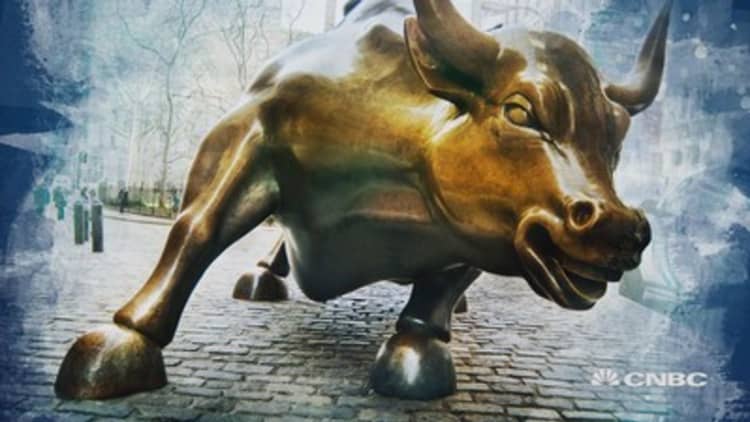
Age is just a number.
With the stock market attaining the crown of the longest-running bull market in modern financial history, investors should not fret over the milestone but should focus on the solid underpinnings driving the run.
The current bull market rally, which started March 9, 2009, became the longest one on record since World War II on Wednesday by avoiding a 20 percent or more decline, according to S&P Dow Jones Indices. The market has risen more than 300 percent since its low nine years ago. On Tuesday, it tied the rally from 1990 to early 2000, which totaled 3,452 days, and hit a record high.
(There's only one caveat: if the stock market failed to rise above Tuesday's record and dropped 20 percent from here, then it would be a tie. In early trading Tuesday, the S&P 500 was sitting just below that record and flat for the day.)
Belpointe chief strategist David Nelson warned investors to ignore the skeptics who may use the milestone as a reason to get out of the U.S. stock market.
"The data still points to U.S. equity markets as being the better asset class. Look around the world. We're the best game in town," he wrote in an email Monday. "If someone calls telling you to take money out of the U.S. and put it in emerging markets because they are cheap, HANG UP. Dead money for 12 years. Cheap for a reason."
One Wall Street veteran explained the rally's length is unimportant, and what matters for the market is the economy's strong growth.
"Bull markets don't die of old age. What kills them is recessions," Yardeni Research's Ed Yardeni said Monday on his website. "The earnings picture has been so bright. … I think we're going to have a long expansion. I think the bull market continues."
Yardeni reaffirmed his 3,100 year-end target for the S&P 500, representing 9 percent upside to Monday's close.
In similar fashion, J.P. Morgan Chase CEO Jamie Dimon agreed the state of the economy is the main driver for the market. He said earlier this month that the current bull market could "actually go for two or three more years."
Trump effect
The difference maker for stock market to extend its gains could be President Donald Trump's tax reform.
The president signed the Republican tax overhaul in December, which permanently lowered the corporate tax rate to 21 percent from 35 percent. The bill reduced tax rates on individuals across the board and nearly doubled the standard deduction — although those changes are in effect only from 2018 through 2025.
As a result, economic growth is accelerating and corporate revenues are booming.
The government grew at 4.1 percent, the fastest pace in nearly four years. In comparison, the euro zone grew only 1.4 percent in the same period, the lowest growth rate since 2016.
Perhaps no single company is a better barometer of economic health than , the country's largest retailer. In 2016, the company said more than 40 percent of the U.S. population, or 140 million people, shopped at Walmart on a weekly basis.
Last week, Walmart in the past decade.
The retailer's shares closed up 9.3 percent last Thursday, 16 after it posted its highest domestic same-store sales growth in more than 10 years for its second quarter. Walmart reported an increase of 4.5 percent versus the Thomson Reuters estimate of 2.4 percent.
To be sure, the fiscal stimulus from lower tax rates and increased spending may sow the seeds of the rally's eventual demise.
Former Federal Reserve Chairman Ben Bernanke in June cautioned how Trump's tax reform may lead to difficulties in a couple years as the boost wears off.
"What you're getting is a stimulus at the very wrong moment that the economy is already at full employment," Bernanke said at the American Enterprise Institute on June 7. "So you're getting hit by a big stimulus … under current law it's going to hit the economy in a big way this year and next year, and then in 2020 Wiley E. Coyote is going to go off the cliff and going to look down. That'll be essentially withdrawn at that point."
But the market may not discount a stimulus lapse that far out in the future as long as the economy keeps accelerating into next year.
With mounting evidence from major corporate bellwethers that the U.S. economy is still improving, investors should take solace the stock market rally will likely keep going as well.


